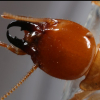Hey guys,
I'm a chemist at a wood company and I'm attempting to colonize termites in a terrarium for use in eco-friendly termite repellent wood additives for use in products. I have a couple questions before I get started and in my attempts to answer them I stumbled upon your community.
It would be great to have a consistent contact for questions so if you consider yourself an expert, preferably one who is familiar with the practice of science, reach out and let's be friends if you are interested.
I did want to note that we are not using termiticides, but rather repellents that keep the termites from burrowing into wood structures, as opposed to attempting to kill the termites. Ideally, I am trying to raise a colony (is that the correct term?) that I am able to sustain, while running experiments to test strength of repellents.
Has anyone explored this type of test? Would using wood containing the repellent and determining which is more appealing be the right test, or would using something like sand as burrow material to see if burrows are deeper in untreated sand be more of an applicable experiment?
Thanks for the help and I'm excited to participate in discussion















